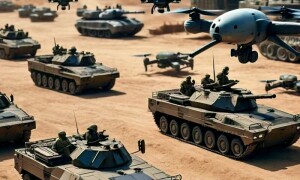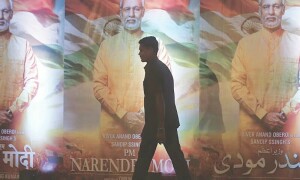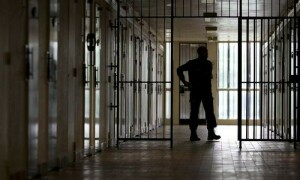EVEN after the country’s rulers dangled the carrot of foreign investments amounting up to $70 billion in front of them, experts, bankers and analysts in Pakistan are finding it hard to digest the prospect of such massive inflows, given the tattered state of our fundamentals.
After the formation of the Special Investment Facilitation Council (SIFC), the general impression is that the armed forces are in charge — ostensibly to give strong signals of stability to foreign investors.
Investors are a fickle lot and generally like to invest in a company or a country only once they are sure their financing will get maximum security.
“Pakistan has experienced foreign direct investment (FDI) inflows — both in democracy and otherwise. However, investors always look for stability, strong institutional capacity and global economic environment,” says Faisal Mamsa, CEO of Tresmark, a terminal that tracks live prices of financial markets.
Experts believe ‘coercive measures’ to bring down dollar won’t go down well with IMF
“Given that all three factors are against us, it would be a tall task, especially if the breakdown of these inflows is vague,” he says, referring to the plan to secure up to $70bn from various friendly countries.
The crisis stems from a dearth of foreign exchange in our reserves, which has led to slashed imports and a stated and unstated halt from the central bank on opening letters of credit (LCs).
This has ultimately hit economic growth, taking it to the lowest possible ebb.
However, the state’s push for foreign investment through the SIFC is being touted as something that can change all that.
To be fair, the stated amount is so massive that it does have the potential to change the country’s entire economic scenario and eliminate most external account-related woes.
At a time when the country is dogged by problems with the import bill, current account deficit and the gross depreciation of the local currency, the prospect seems mouth-watering, to say the least.
But it is still not known how much a country would invest, where they would put their money, and for how long. Caretaker Prime Minister Anwaarul Haq Kakar recently said that Saudi Arabia would invest about $25bn in two to five years, but the rest of the details are sketchy, at best.
Dawn reached out to Caretaker Finance Minister Shamshad Akhtar to ask for a breakdown of the proposed investment that the SIFC is looking to generate. However, she did not respond despite repeated attempts.
But one exporter, who in Karachi attended a high-level meeting that was briefed on the plans to secure investment, said it would be hard to materialise. Domestic investors were looking to diversify their investments by putting their money abroad, mainly due to the protracted political and economic uncertainties prevailing in the country, he said.
“We will wait until the dream comes true, but stability is a must before attracting foreign investments,” said the exporter, who was not willing to be identified.
His view echoes the sentiments of the market, as stakeholders would like to know what is being offered to foreign investors, especially when the cost of doing business remains prohibitively high, inflation is over 26 per cent, and general elections — which may lead to some semblance of stability — are nowhere on the horizon.
Quest for a ‘sustainable’ exchange rate
Another development that is being seen as a boon is the recent fall in the dollar’s value, particularly in the open market. It is no secret, however, that this is a direct outcome of the state’s crackdown on illegal currency exchanges and hundi/hawala networks, especially in Peshawar and Quetta, which are hubs for trade with Afghanistan.
According to a Reuters report, hundreds of currency shops in the usually bustling lanes of Peshawar’s Chowk Yadgar bazaar have been closed. Two currency dealers, one in Karachi and the other in Lahore, also told Reuters that security officials, including officers who identified themselves as being from intelligence agencies, had summoned them.
The action was swift; so quick, in fact, that exchange companies offered contradictory accounts of it. The Exchange Companies Association of Pakistan (ECAP) first claimed the presence of plainclothes officers at exchanges but later denied it.
While the government eventually acknowledged the crackdown in earnest, the initial secrecy created the impression that the open market exchange rate was brought down forcefully, rather than organically. How else could the dollar lose Rs28 in the open market within a span of four days?
Some experts view this development with trepidation as well. For them, the International Monetary Fund (IMF) — which has set the government the target of bridging the gap between the interbank and open market rates — would not be too happy about the use of coercive measures to bring down the dollar rate.
“The IMF looks at compliance with its conditions and reforms. Many institutions follow the IMF,” said Mohammed Sohail, CEO of Topline Securities.
Granted the action did help to bring rate differentials down from 9pc a couple of weeks ago to a mere 0.7pc — the IMF’s requirement is 1.25pc — and it will no doubt be a key part of discussions, set to begin later this month, before the release of the next tranche of the bailout.
But in order to sustain this trajectory, currency experts say, the promised inflows of $70bn or so will be crucial. Already, currency trading on the open market is stalled, with buyers refraining from purchasing in anticipation of a further decrease in the dollar rate and sellers holding on to their stocks expecting a jump in the days to come.
Published in Dawn, September 15th, 2023














































Dear visitor, the comments section is undergoing an overhaul and will return soon.